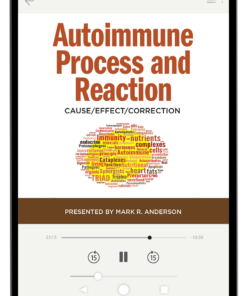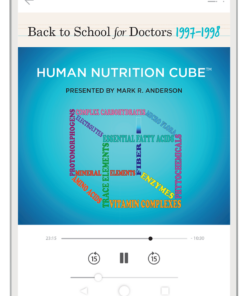Now that Joseph Antell’s Adjuvant Protocols for Healing: A Practitioner’s Manual (APFH) is available, we hear this question often. The Clinical Reference Guide (CRG) has long been an essential reference for practitioners—but it also has its drawbacks. Recently, a doctor wrote asking about the differences she encountered as she researched both the CRG and the APFH manuals. Mark’s reply below clarifies the choices presented by both.
Hi Mark,
I have used the CRG for years and am now wondering why the protocols vary so much from Adjuvant Protocols for Healing (APFH). For instance, under “Eye Floaters” the April 2018 CRG lists Iplex and Cruciferous Complete as the top two products. But neither of those supplements are recommended for floaters in APFH.
Maybe you can enlighten me…as you usually do!
Tamara
Hi Tamara,
Glad you asked. The Clinical Reference Guide is a conglomeration of many different inputs over a long period. It’s the proverbial “too many cooks spoil the broth.” Like a Wiki-type project under no direct authority, it has many voices and almost no editing.
On the other hand, Adjuvant Protocols for Healing is the product of a lifetime of learning from the best minds at Standard Process, direct feedback from Joseph’s own clients and the doctors he’s mentored over the years, and, of course, his deep immersion into the writings and lectures of Dr. Royal Lee. I personally reviewed every single page of the book and offered recommendations in the prepublication phase. Joseph and I have a century between us of working in this field.
This is why, for example, the APFH protocol titled “Eye Floaters” lists three possible causes and protocols rather than a one-size-fits-all approach. We must always nuance our recommendations to fit the patient, not the other way around. Different causes can produce similar effects, which is why you must treat the person and not the symptom. For that very reason, doctors who use APFH will find space on each protocol page to make notes and observations tailored to each patient.
I’m impressed at your desire to not only learn this but to learn it in a contextual way. APFH is meant to be used as a dynamic tool, not simply a book of recipes.
Thanks,
Mark
Image from iStock/Prostock-Studio.







As Mark wisely points out, there is no “One size fits all”. Hence the beauty of APFH. Mark is far more my superior in these matters, but I still love the CRG and reference both most days. Using the floaters reference, my understanding is that AC Carbamide was originally formulated for treating floaters and I myself and MANY patients have eliminated floaters with this product, not referenced in neither CRG nor APFH! Many perspectives have merit. Some more than others. To soap box, this is why “Systems Analysis” as in the Symptom Survey often produces improved results over treating only by symptoms. Long story….
Thanks, Joseph. One correction: Eye Floaters is listed in APFH on pg. 174 (Index page 422: under “E” for Eyes).
Also, AC Carbomide is not recommended for floaters unless there are eye pressure issues. Then AC Carbomide is added to the rest of the protocol. That’s why it’s not listed in the eye floaters protocol.